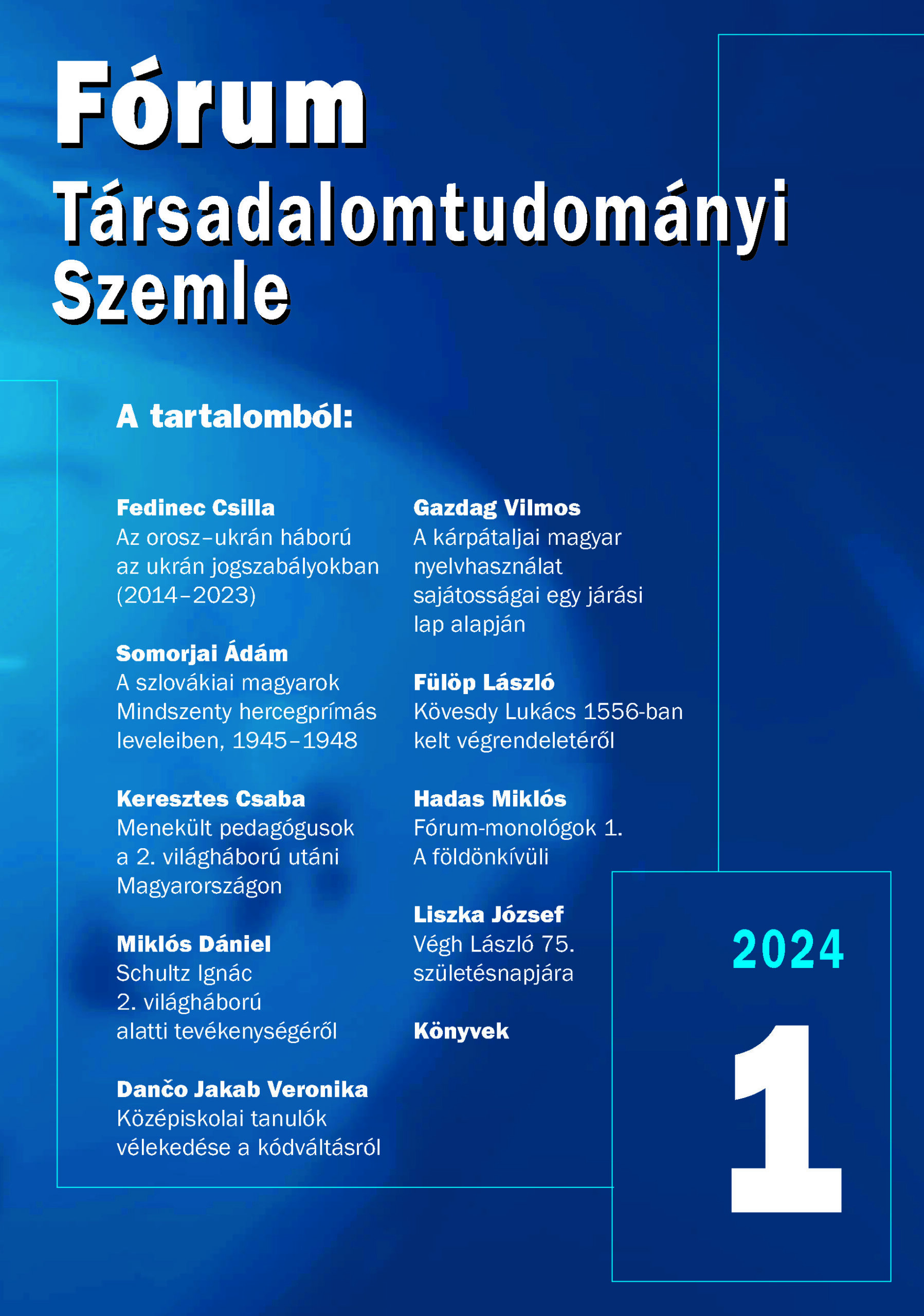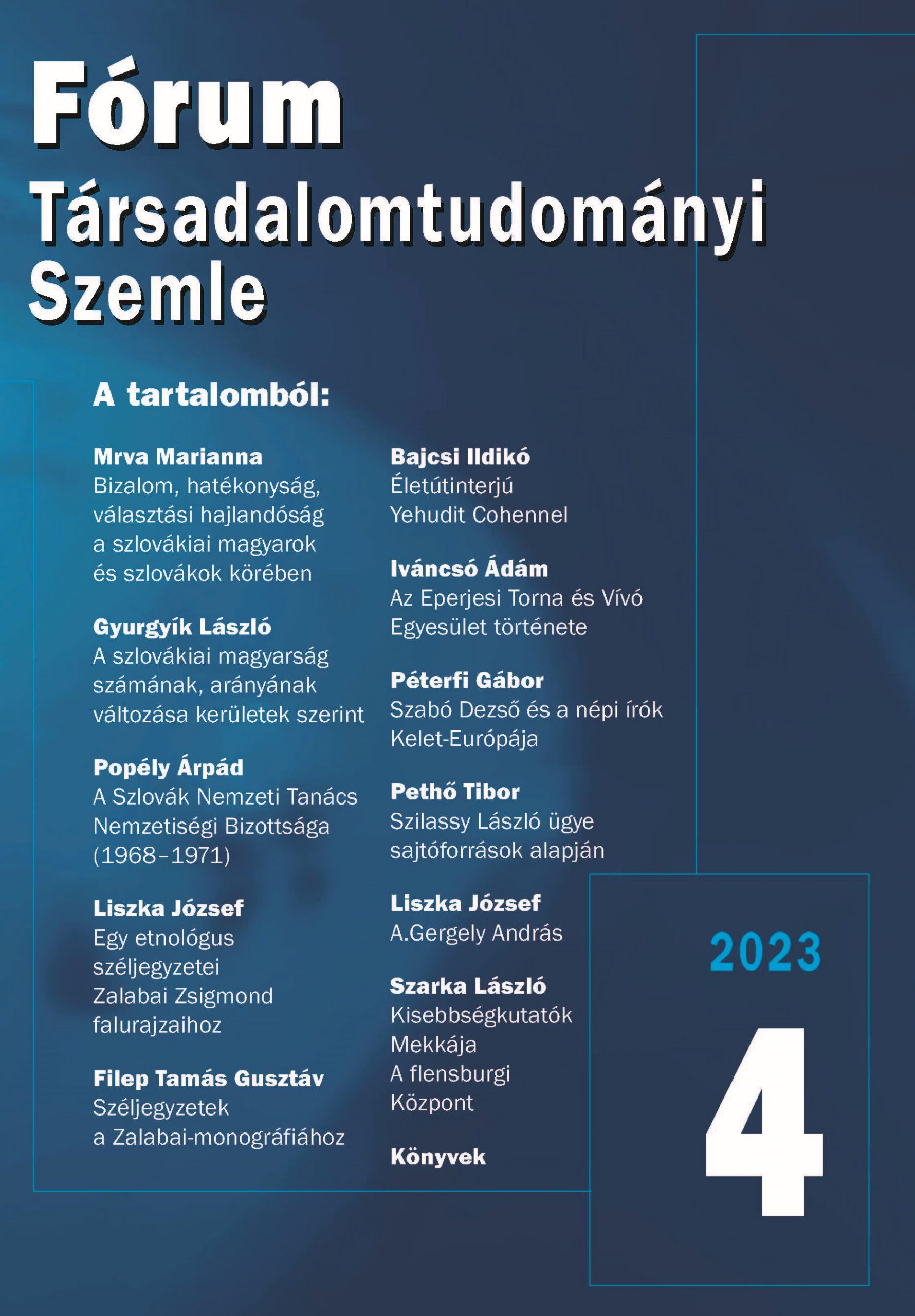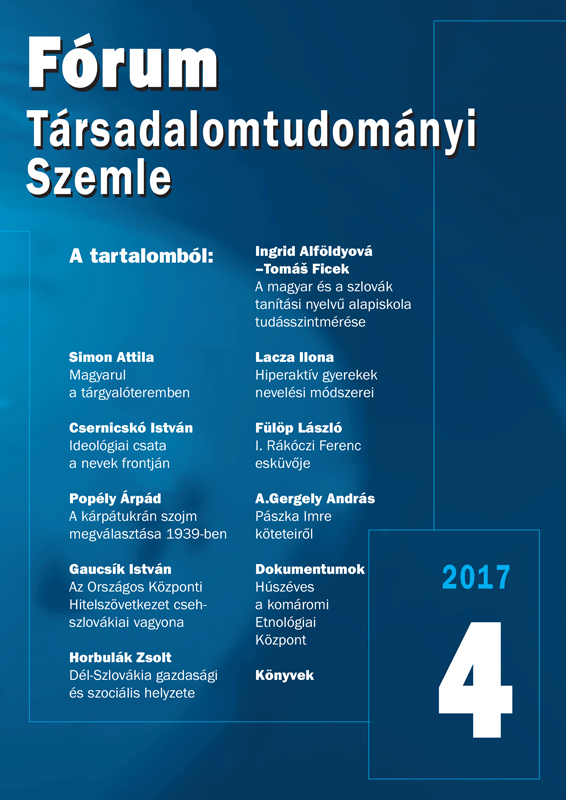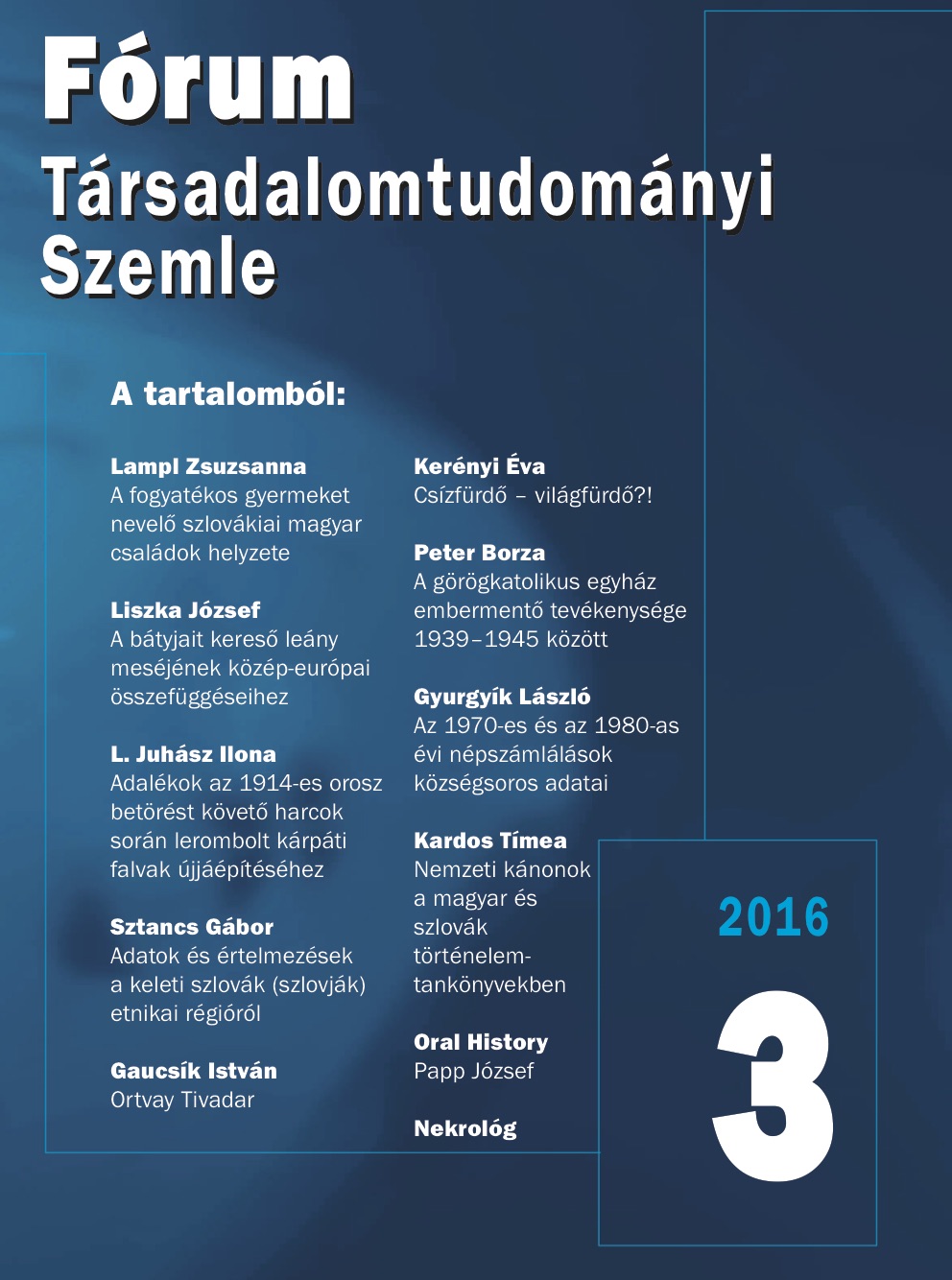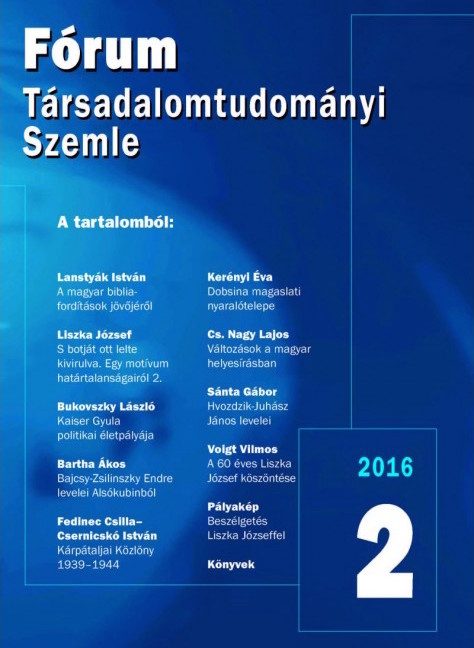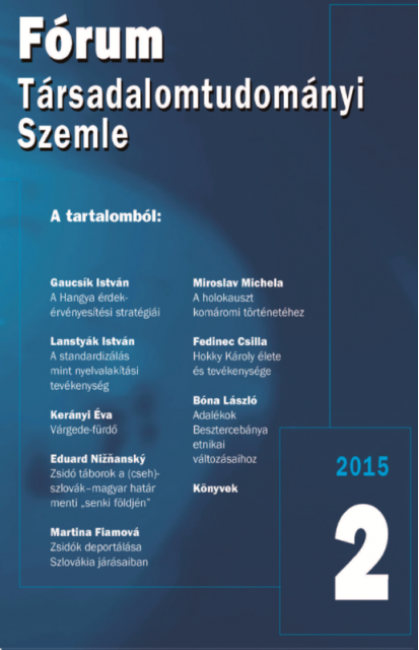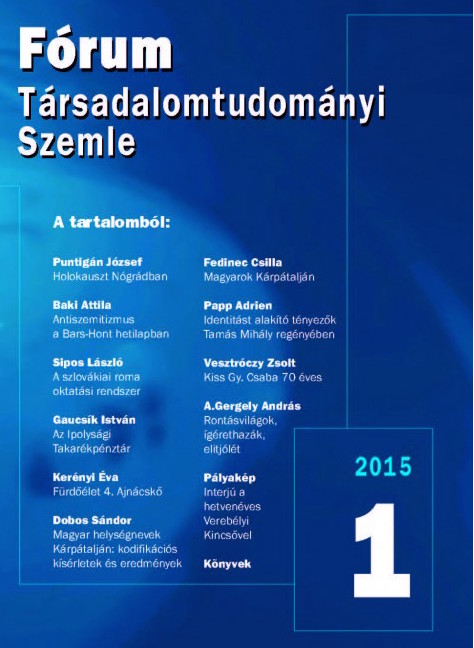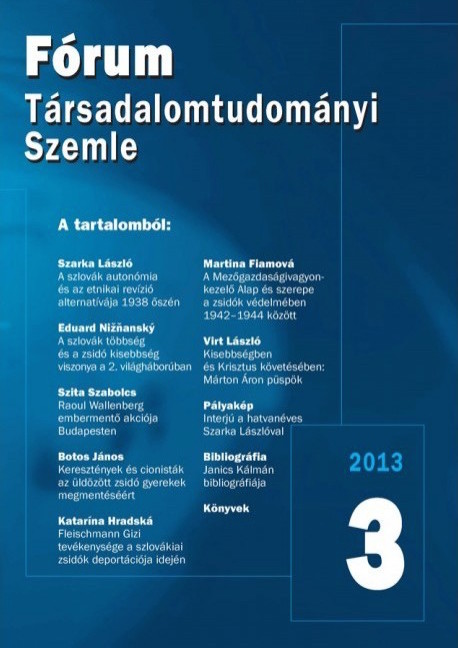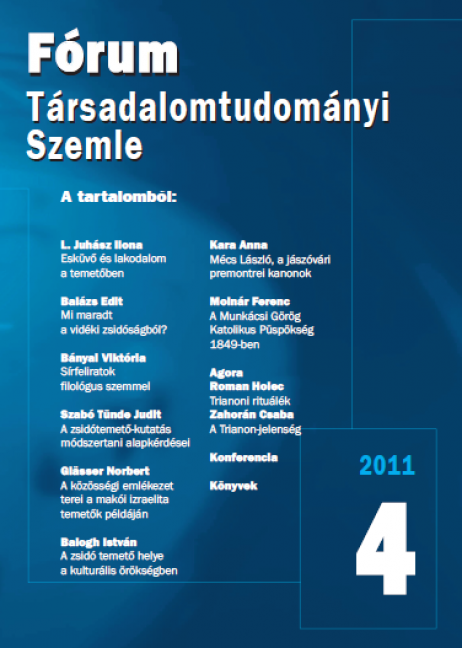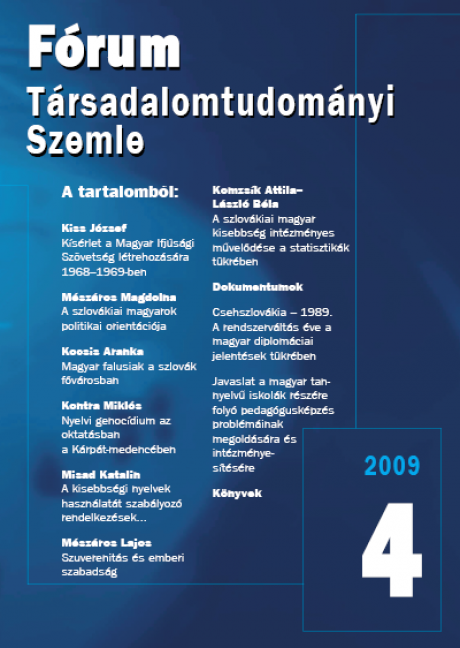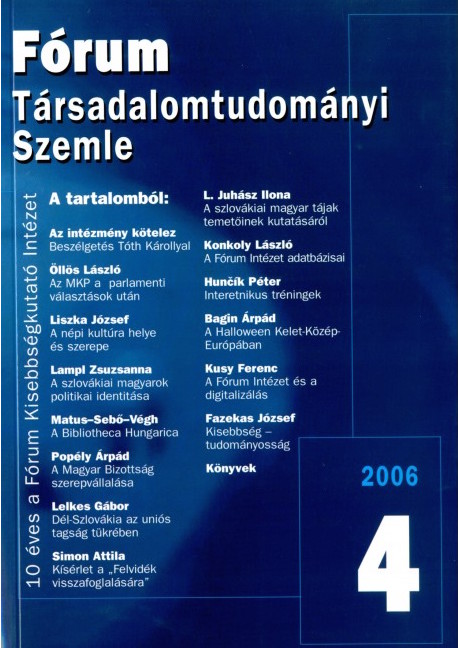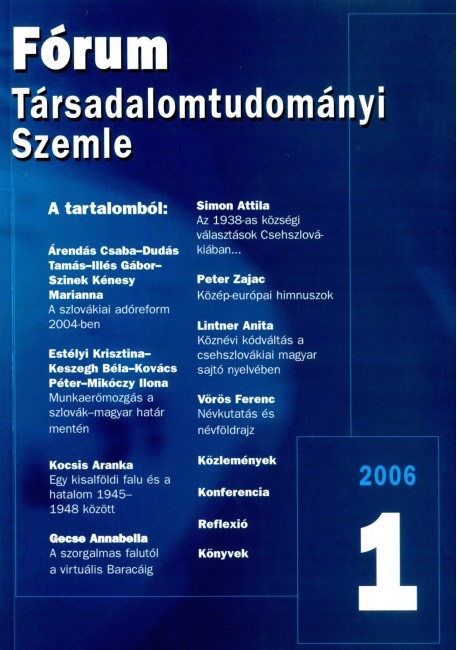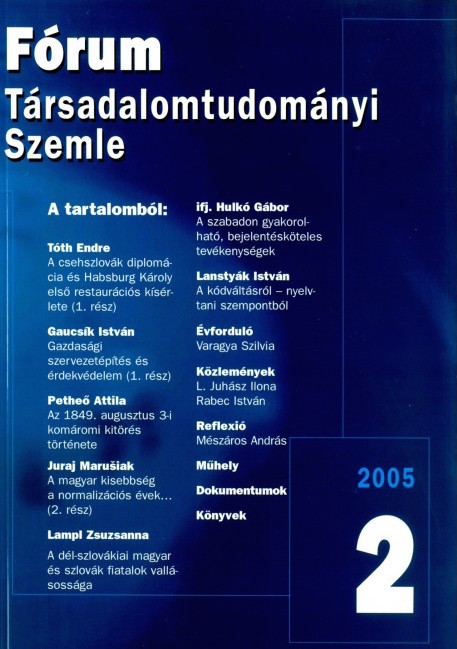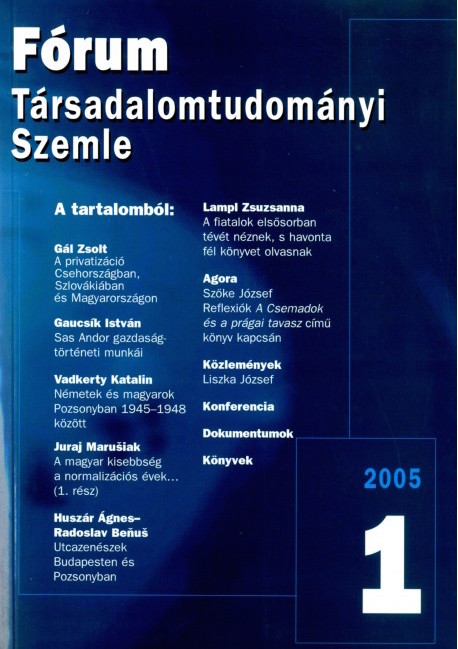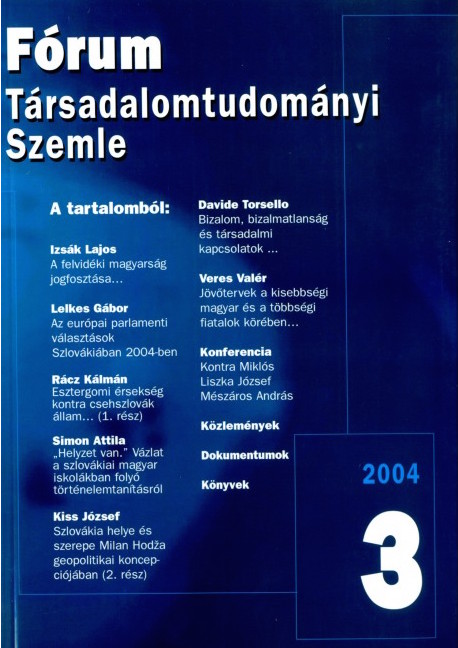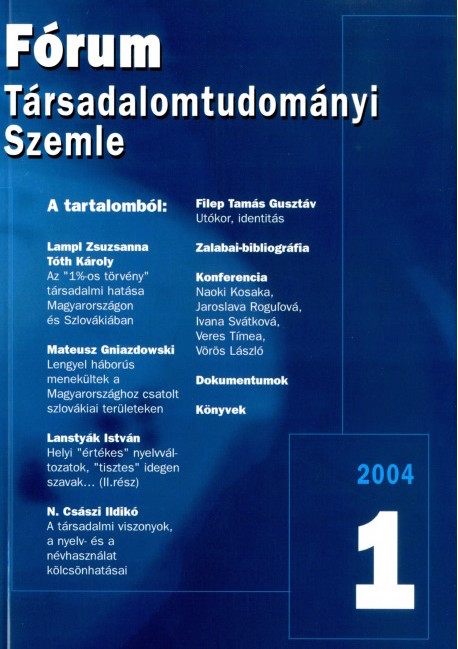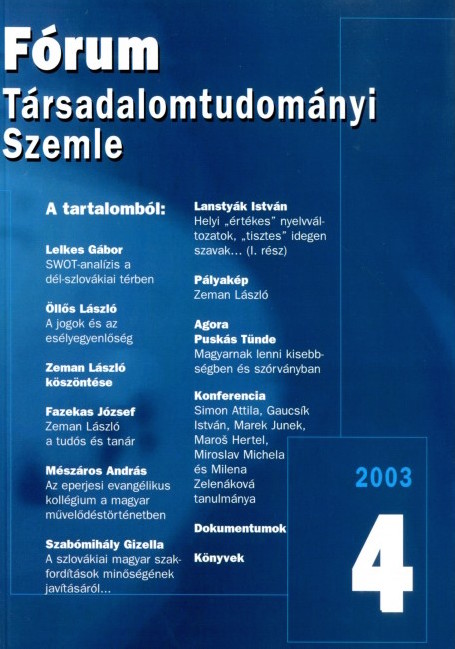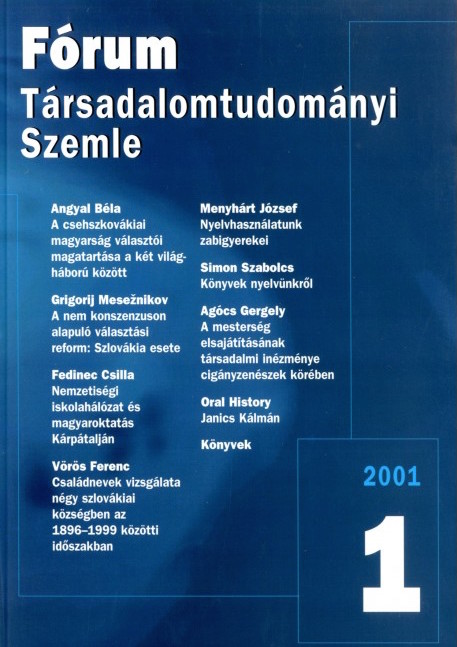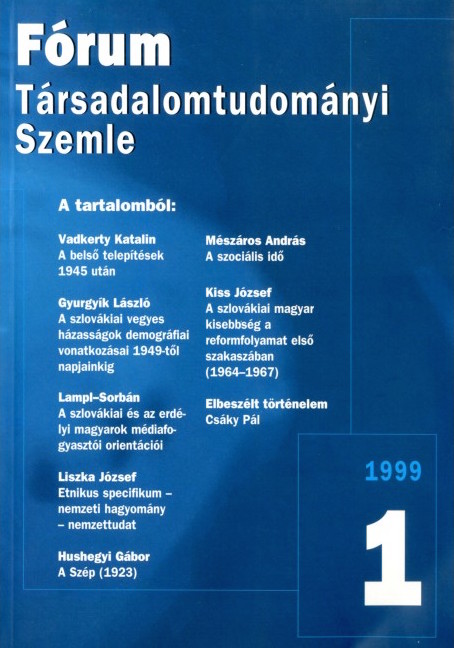Trials for National Anthem in Interwar Czechoslovakia. A Contribution to the Relationship Between Hungarians in Slovakia and the Czechoslovak State
In the period of the First Czechoslovak Republic, Slovakia was an ethnically mixed territory, the scene of the meeting of Czechoslovak, Slovak, and Hungarian nation-building, among other things. From this point of view, the use of different national symbols, including national anthems, was a sensitive and much debated issue. This study attempts to outline the conflicts that the issue of national anthems had provoked between the state and its citizens, based on the archival records of county courts in Slovakia. The main focus of the paper is on the conflicts between the Czechoslovak state and the Hungarian population in Slovakia over the Hungarian national anthem. Based primarily on the county courts of the period and news reports in the contemporary press, the paper describes the court cases over the anthem and their outcomes. In doing so, it shows that the First Czechoslovak Republic, which was considered a liberal democracy, did not have a liberal attitude towards the use of symbols of national minorities at all.
Arrow Cross in and around Komárom (Komárno) after the First Vienna Award
This study aims to provide a detailed exploration of the Arrow Cross movement in southern Slovakia. In particular, it examines the history of the Arrow Cross movement in and around Komárom (Komárno) between 1938 and 1945, i.e. its actions in the so-called “Hungarian times” following the First Vienna Award of 2 November 1938. It is clear from archival documents and opposition press articles that the Arrow Cross movement had already begun to organise in the Upper Lands immediately after the annexation. After the ‘return’ of Hungary, Arrow Cross ideas also spread among the inhabitants of Komárom and its environs, and the economic difficulties of the town played a part in this. By the end of 1940, along with the central party organisation in Komárom, Arrow Cross party offices were established in the municipalities of the district. Arrow Cross ideas were also popular in the city among former communists, who saw the Arrow Cross party as representing workers’ interests. Many of them, however, soon became disillusioned with the party and joined the next far-right Hungarian Renewal Party (Magyar Megújulás Párt), of which Andor Jaross was one of the leaders, which was founded in October 1940. It was only after 16 October 1944 that the Arrow Cross could become a dominant factor in the town. Shortly after the Szálasi coup, there were also exchanges of officials and acts of terror against ‘enemies’ of the regime in and around Komárom.
Changes in the Number and Proportion of Hungarians in Slovakia by Districts Based on the 2011 and 2021 Census Data
The study deals with the development of the number of Hungarians in Slovakia by districts based on the data of the 2011 and 2021 censuses. In a first approach, the data at the district level for ethnicity, mother tongue and 2nd ethnicity are examined. Then, based on combinations of these three ethnic indicators, the four types of Hungarian affiliation are analysed in relation to the proportion of Hungarians living in the districts. The differences in the number, composition and types of Hungarians living in Hungarian and non-Hungarian districts are examined. We will also examine the contribution of the three variables included in the analysis to the evolution of the number of Hungarians at the district level. The tables in the appendix provide a deeper understanding of the relationships presented in the study.
From the Verbal to the Literate – And Back? Notes on the Early Work of Albert Wesselski
This paper attempts to present the intellectual legacy of Albert Wesselski (Vienna, 1871–Prague, 1939), a partly forgotten great figure of literary and textual folkloristic comparatistics of the first half of the 20th century, and argues for his timeliness. While he also played an important role as a literary mediator and translator (e.g. translations and interpretations of Boccaccio and Dante, translations of medieval Italian, French and Flemish folklore texts), he was primarily concerned with questions of the origins of European and Asian fairy tales, the problem of the processes of transmission and genre theory. He presented the transnational and transcontinental connections between individual (fairy-tale) texts in his reflections, which were based on his exceptional erudition and knowledge of the material. His views on the essentially literary origins of fairy-tale material were disputed by many in his day, but at least some of them now seem to be confirmed. His comparative method can be an inspiration for those working with folklore and literary texts, both here and now. The present paper attempts to provide a sketchy overview of the early stages of Wesselski’s oeuvre and to inspire further reflection.
Linguistic Ideologies in a Minority. Examples From Catalonia, Csallóköz and Budapest
Critical sociolinguistics with a qualitative approach seeks to explore the background of language-related social issues. Such issues include, for example, the systems of ideas that shape contemporary public thinking, especially when it comes to language choice in minority contexts. The paper compares three such contexts: the context of a diasporic group (Hungarians in Catalonia, Spain), the young adults of an indigenous minority (Hungarians in Csallóköz, Žitný ostrov, Slovakia), and the media representation of sexual minorities in Hungary. The comparison is based on three separate studies with a qualitative and explorative orientation conducted by one of the authors each. These studies examined the language ideologies of late modernity and global capitalism that the literature identifies as discourses of pride and profit. We argue that speakers’ narratives on their language choice are permeated by the concept of profit in a way that pride is no longer evidently associated with authenticity.
Public Signs and Barriers. The Citizen Participation Side of Social Media and the Demand for Digital Objectivism
Online movements based on local, regional or ethnic identities and their positive effects, which support civic participation and express community solidarity, are of particular importance in evaluating digital media. To better understand the social impact of digital media, three case studies are presented. Two independent case studies – one on language use in southern Slovakia and the other on online organisations in Szeklerland – will be analysed to understand the context of online social mobilisation. Thirdly, a further case study is used to investigate the extent to which certain ideas related to competitiveness, meritocracy and consumption prevail among the domestic population, with a particular focus on university networks. Finally, it is concluded that it is important to take into account the complexity of the impact of digital media in the evaluation and not to stick to optimistic or pessimistic extremes.
The Relational Ritual of Online Prayer in Roma Communities During the Pandemic
During the pandemic, a worldwide revival of religious discourse was observed. Insecurity and isolation in the Transylvanian Gábor Roma communities, which were heavily affected by the pandemic, also intensified the need to turn to the transcendent. This has given rise to the practice of online prayer (lajvo manglimo) on social media, a ritual of both turning to the sacred and affirming social solidarity. While prayer used to be an institutional or private practice, mainly linked to the Adventist prayer house scene, it has become an ethnicised, online relational ritual in the Covid period, largely in Romani and with Roma participants. Through participation in prayer, Roma who had been forced to isolate themselves from each other created trans-local online communities of practice, and a new public arena for Romani language use was created. This paper examines the structure, function, institutionalisation and impact of online prayer on Romani language use based on data collected through online fieldwork.








